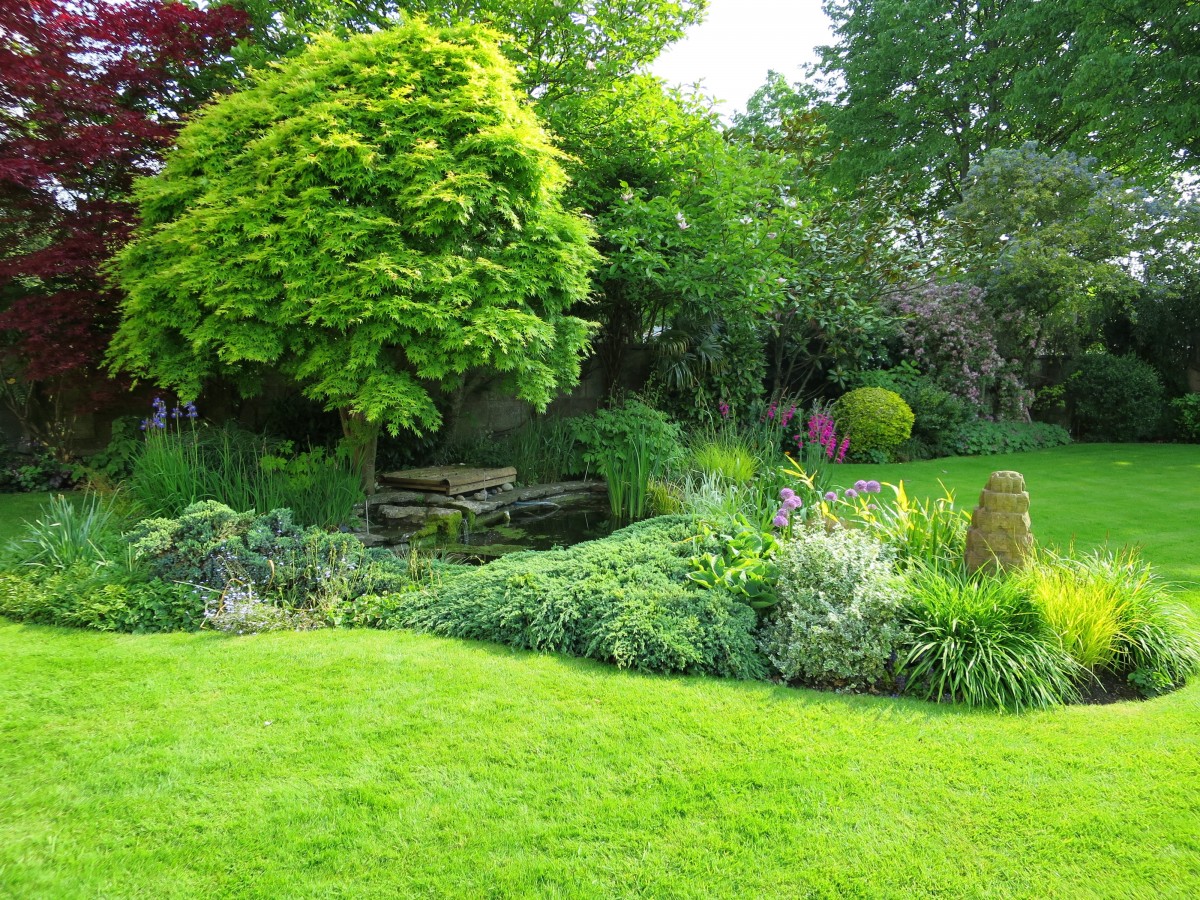
Planning a garden around your home can seem like a daunting, overwhelming undertaking — so many choices, so much investment, so little understanding about what plants to use, seemingly huge risks should you make the wrong decisions. The process involves far more details than we can address in a few paragraphs here, but a few fundamentals will help simplify the decision-making, whether you do it yourself or seek professional help.
You’ll need to determine the type of garden you want. Discuss with your family how you expect to be using the spaces. Are you seeking an appealing public-face from the road, a welcoming entrance, screening, a backyard retreat, a minimal-maintenance space to relax, or something else? Choosing a well-defined objective helps narrow the focus and simplifies your choices.
Observing while walking around your neighborhood, visiting friends’ yards, touring public gardens, reading garden design publications, and participating in gardening discussions are all good ways to help develop concepts. Join a local gardening group or bring your ideas to design professionals at your local garden center.
Make sure the elements that comprise your chosen area are appropriate for your intended purpose. Be aware of soil characteristics, moisture, sunlight, wind exposure, accessibility, and proximity to features you want to enhance or conceal. How do you intend to use the space each season? From what vantage points will the area be viewed or approached? Considering these conditions and others helps define the type, sizes, colors, textures, and other characteristics of the elements and plants you should choose for your design.
Investing the time to learn about the types of plants that suit your plans will yield considerable rewards. Many homeowners visiting garden centers tend to choose what’s showing color at the time, and that’s generally a mistake. Combining plants with different seasons of interest adds significantly to the value of your yard. The best garden designs are appealing for more than a single point of time during the year and include considerations like maintenance requirements, fragrance, form, and texture. Gardening publications, online resources, and horticultural advisers at your local garden center can suggest options.
Set a budget for your project. Installing mature-size (expensive) trees or shrubs may not be your most prudent choice. Underestimating how fast plants grow and how large they will become is a common mistake, so design your plantings to accommodate change as their component trees, shrubs, and herbaceous perennials grow toward maturity.
Make sure you start by installing the critical basic elements for the garden, adding less essential components as you are able. Some gardens successfully utilize temporary plantings like non-woody “filler” plants, colorful annual flowers, and tropicals in gaps between smaller, less costly “starter-size” shrubs and trees. Filler-type non-woody plants that can survive more than one season include rhubarb, strawberry, lavender, thyme, sage, oregano, rosemary, and chives. Annual herbs like dill, nasturtium, basil, and parsley can also be good choices. For vegetables, try chard, carrots, lettuces, beets, corn, kale, peppers, tomatoes, fennel, and cabbage.
Don’t fear making mistakes; every garden changes over time. Rare is a planting plan that never needs to be modified. Plants are living organisms, continually affected by elements beyond our control. Droughts, floods, sudden temperature changes, pests, insects, heavy winds, snow loads, and so many other factors are involved in influencing how well your gardens perform. Planning yours should be a pleasant, rewarding process, particularly when you’ve done your homework and know to ask the right questions.
Wayne Mezitt is a 3rd generation nurseryman, a Massachusetts Certified Horticulturist, now chairman of Weston Nurseries of Hopkinton, Chelmsford & Hingham MA, and owner of “Hort-Sense”, a horticultural advisory business. He currently serves in various capacities on several horticulturally-related organizations, including the Massachusetts Horticultural Society at The Gardens at Elm Bank in Wellesley MA, and chairman for the Massachusetts Invasive Plant Advisory Group (MIPAG).









